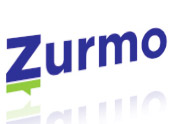
Google has launched a new service that lets advertisers track their ads’ success at generating phone calls following user clicks.
The AdWords tool, called “Website Call Conversions,” is designed to help marketers tweak their online ads to prompt more valuable phone inquiries.
The tool works by generating a unique phone number that appears on a company’s website after a user arrives there by clicking on an ad. If a user makes a phone call following the ad click, Google then supplies the advertiser with information about which keyword and ad sparked the phone call.
About Time
Website Call Conversions allows users to assign different values to calls depending on where they originated. So, a restaurant could figure out whether most of their calls were coming from ads on their website’s home page or from those on an online menu page, for instance.
The unique forwarding phone numbers remain active for 90 days, so the tool potentially can track phone calls that are made weeks after a user has clicked on an ad.
“The increasing usage of this tool can have a direct impact on search engine advertising auctions in the near future,” said Anindya Ghose, codirector of the Center for Business Analytics at NYU Stern.
The service is available starting now in the U.S., the UK, Australia, France, Germany and Spain.
Google is late to the game with this type of service, said Gordon Owens, digital marketing consultant at GO Digital WSI.
“This is by no means a new idea,” he told the E-Commerce Times. “Over the last year or so, Google has added many tools to encourage marketers to buy more ads directly, but call tracking was still a third-party option until now. This feature may be the last piece of the puzzle in getting more direct buys from ad agencies and marketers.”
Mapping Buyer Decisions
Google’s Website Call Conversions might not be a killer app for Google, but it is an important addition, said Paul Gillin, a social media marketing strategist.
“It fills an important gap in the advertising services it provides,” he told the E-Commerce Times. “Most consumer businesses get their incoming leads through multiple channels, and toll-free numbers are still an important — if declining — part of the mix.”
Google’s service is particularly compelling because of the analytical information that comes with the tool, said Gillin.
“An advertiser can theoretically tell not only what page a call came from [but also] what steps the caller took through a website before landing on that particular page,” he added. “This can be important to understanding what steps lead the customer to a buying decision.”
The tool will be more popular in certain industries rather than others, Gillin noted. For businesses that target the types of consumers who place phone calls, though, it’s a competitive addition and one that likely will lead to future direct sales.
“Some businesses — like hospitality — now take more than 80 percent of their reservations online,” Gillin pointed out. “I expect that businesses that target older and less tech-savvy customers will find this feature particularly useful.














































